Llanbadoc Discovery: Late Medieval Artifact And The Battle Of Usk
A. Sutherland - AncientPages.com - An interesting historical artifact in the form of a fragment of a late medieval mount was discovered in the vicinity of Llanbadoc, in Monmouthshire, the River Usk.
This late medieval silver inscribed mount, dating from more than 300 years ago, has been declared treasure by HM Coroner for Gwent © National Museum Wales
The 15th-century artifact inscribed with the words: "none this good" could have formed part of the grip of a sword lost by a knight near the River Usk.
The site is related to the 1405 Battle of Pwll Melyn, also known as the Battle of Usk.
This military encounter was part of the Welsh War of Independence against English rule that lasted from 1400 to 1415. The battle occurred in the spring, probably the 5th May of 1405, and the defeat of the Welsh rebels here was devastating.
It included the loss of influential leaders and men. A contemporary Welsh chronicle described it as a "slaughter": "It was now the tide began to turn against Owain and his men.."
Accidental Discovery Of The Artifact
The artifact was accidentally found near the River Usk in March 2014 by the metal detectorist, Michael Beirne, a Fabrication and Welding Engineering student at the Coleg Gwent City of Newport campus.
 Usk Usk Castle. Image credit: CastlesFortsBattles.co.uk
Usk Usk Castle. Image credit: CastlesFortsBattles.co.uk
A slightly concave curvature and an invocation to the Virgin (in Latin and Low German) - also seen on finger rings contemporary to the period - feature on the rivet-holed mount, found near Llanbadoc, Monmouthshire, and reported to the National Roman Legion Museum in Caerleon.
The silver mount bears two incomplete inscriptions against a recessed diagonally hatched background. There are two unfinished holes, suggesting that it once formed part of a composite object.
The surviving fragment that may have been part belonged to a Welsh or English knight represents half its original length, leaving room on the missing section for another short motto or an enameled shield of arms.
Usk was attacked in 1402 by the forces of Owain Glyndwr. He had capitalized on anti-English feelings amongst the Welsh and declared himself Prince of Wales. A further attack, aimed specifically at capturing the castle, was made in 1405. The town was burnt, but the castle held out.
Castle Oak pond, Usk This pond was originally excavated in the 1850s to provide water for the steam trains on the line between Little Mill and Monmouth. During the excavation skeletons were found believed to be those slain at the battle of Pwll Melyn in 1405 when Owen Glendower's forces were heavily defeated by those of Henry IV. The line was closed in 1955 by Lord Beeching. Despite now being totally surrounded by the Castle Oak housing estate the pond is home to a rare amphibian -the greater crested newt. Image credit: Roger Davies - CC BY-SA 2.0
However, the defenders, led by Lord Richard Grey of Codnor and Dafydd Gam, drove off the assault and routed the Welsh at the Battle of Pwll Melyn just a few hundred meters from the castle.
According to historian J. E. Lloyd, writing in 1933:
"Pwll Melyn . . . is the pond lying north-east of Usk Castle. . . numerous skeletons were found in this pond when it was cleaned out. The pond is so called because the water is always slimy and of a dirty colour. . . The 'pwll' itself is reduced in size, the marshy land drained, and the 'pwll' is now enclosed by an iron railing and supplies water to the railway. From the 'pwll,' the ground rises westward, and here Owen's army attacked the castle on the north. It is a well-known spot and the name has never been lost."
Casualties on the Welsh side were devasting; they lost 1500 men, according to some sources. According to Adam of Usk (c. 1352 – 1430), a Welsh priest, canonist, and late medieval historian and chronicler, three hundred prisoners were beheaded in front of Usk Castle following the battle.
Gruffudd ab Owain Glyndŵr (c.1375-c.1412), the disinherited Prince of the old Royal house of Powys Fadog who led a major revolt in Wales (1400 and c.1416), was captured and imprisoned in the Tower of London.
Owain's brother Tudur was killed in the field.
Updated on July 25, 2022
Written by – A. Sutherland - AncientPages.com Senior Staff Writer
Copyright © AncientPages.com All rights reserved. This material may not be published, broadcast, rewritten or redistributed in whole or part without the express written permission of AncientPages.com
Expand for referencesMore From Ancient Pages
-
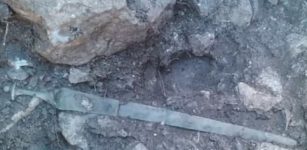 Mystery Of The Ancient Talayot Sword
Archaeology | Sep 30, 2019
Mystery Of The Ancient Talayot Sword
Archaeology | Sep 30, 2019 -
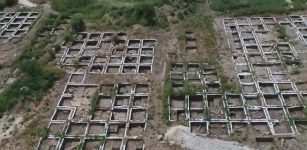 9,000-Year-Old Settlement Unearthed Near Jerusalem Sheds New Light On Stone Age Civilization
Archaeology | Jul 17, 2019
9,000-Year-Old Settlement Unearthed Near Jerusalem Sheds New Light On Stone Age Civilization
Archaeology | Jul 17, 2019 -
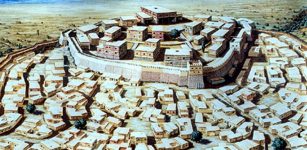 Achilles – Son Of King Peleus And Leader Of The Nereids
Featured Stories | Sep 3, 2015
Achilles – Son Of King Peleus And Leader Of The Nereids
Featured Stories | Sep 3, 2015 -
 Submerged Ancient Bridge Found In Genovesa Cave Reveals Humans Settled In Mediterranean Much Earlier Than Previously Thought
Archaeology | Sep 2, 2024
Submerged Ancient Bridge Found In Genovesa Cave Reveals Humans Settled In Mediterranean Much Earlier Than Previously Thought
Archaeology | Sep 2, 2024 -
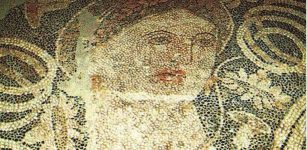 Wax Tablets Reveal Ancient Secrets of The Illyrians
Artifacts | Sep 5, 2015
Wax Tablets Reveal Ancient Secrets of The Illyrians
Artifacts | Sep 5, 2015 -
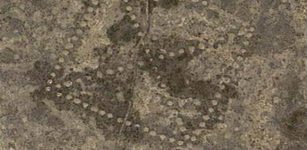 Unique Geoglyphs In Torgay, Kazakhstan – Destroyed
Civilizations | Sep 5, 2015
Unique Geoglyphs In Torgay, Kazakhstan – Destroyed
Civilizations | Sep 5, 2015 -
 The Colored Skeletons Of 9000-Year-Old Çatalhöyük (Catalhoyuk), Turkey – New Examination
Archaeology | Mar 18, 2022
The Colored Skeletons Of 9000-Year-Old Çatalhöyük (Catalhoyuk), Turkey – New Examination
Archaeology | Mar 18, 2022 -
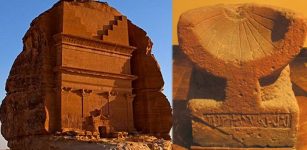 Mada’in Saleh: Spectacular Rock-Cut Tombs And Monuments Reflect Great Skills Of Nabataean Builders
Featured Stories | Aug 18, 2020
Mada’in Saleh: Spectacular Rock-Cut Tombs And Monuments Reflect Great Skills Of Nabataean Builders
Featured Stories | Aug 18, 2020 -
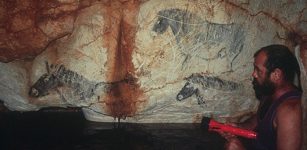 Race To Save Magnificent Underwater Stone Age Paintings Hidden In The Cosquer Cave
Archaeology | Jun 6, 2022
Race To Save Magnificent Underwater Stone Age Paintings Hidden In The Cosquer Cave
Archaeology | Jun 6, 2022 -
 Meskiaggasher: Legendary Founder Of The First Dynasty Of Uruk Who ‘Entered The Sea And Disappeared’
Featured Stories | Apr 20, 2021
Meskiaggasher: Legendary Founder Of The First Dynasty Of Uruk Who ‘Entered The Sea And Disappeared’
Featured Stories | Apr 20, 2021 -
 Ancient Manuscripts Of Mythical City Of Timbuktu
Artifacts | Jun 12, 2014
Ancient Manuscripts Of Mythical City Of Timbuktu
Artifacts | Jun 12, 2014 -
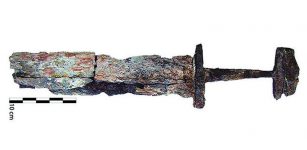 Viking Sword Found In Patara May Have Belonged To A Varangian Guard
Archaeology | Nov 22, 2018
Viking Sword Found In Patara May Have Belonged To A Varangian Guard
Archaeology | Nov 22, 2018 -
 On This Day In History: Cliff Palace At Mesa Verde, Colorado Discovered – On Dec 18, 1888
News | Dec 18, 2016
On This Day In History: Cliff Palace At Mesa Verde, Colorado Discovered – On Dec 18, 1888
News | Dec 18, 2016 -
 Common genetic origin for farmers from Central Europe and the Mediterranean area
Human Beginnings | Sep 5, 2015
Common genetic origin for farmers from Central Europe and the Mediterranean area
Human Beginnings | Sep 5, 2015 -
 Missing Piece Of A Linguistic Puzzle: Ancient DNA Identifies The Originators Of Indo-European Languages Spoken By 40% Of The World
DNA | Feb 12, 2025
Missing Piece Of A Linguistic Puzzle: Ancient DNA Identifies The Originators Of Indo-European Languages Spoken By 40% Of The World
DNA | Feb 12, 2025 -
 Mysterious Ancient Underground Chambers Beneath Jerusalem Baffle Archaeologists
Archaeology | Jul 6, 2020
Mysterious Ancient Underground Chambers Beneath Jerusalem Baffle Archaeologists
Archaeology | Jul 6, 2020 -
 Similarities And Differences Between Living Spaces Of Neanderthals And Homo Sapiens
Archaeology | Apr 9, 2024
Similarities And Differences Between Living Spaces Of Neanderthals And Homo Sapiens
Archaeology | Apr 9, 2024 -
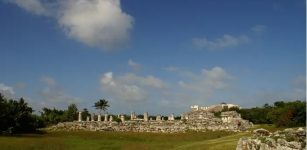 Immigrants In Prehispanic Cancun Were Treated Just Like Maya Locals
Archaeology | Oct 26, 2023
Immigrants In Prehispanic Cancun Were Treated Just Like Maya Locals
Archaeology | Oct 26, 2023 -
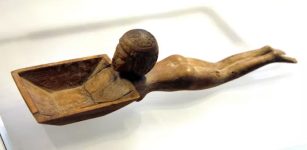 Intriguing And Suprising Ancient History Of Swimming That Started Over 100,000 Years Ago
Featured Stories | Dec 28, 2022
Intriguing And Suprising Ancient History Of Swimming That Started Over 100,000 Years Ago
Featured Stories | Dec 28, 2022 -
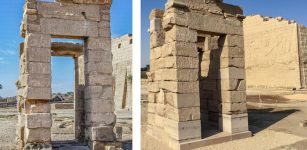 Ancient Egyptian Monuments Threatened By Climate Change Restored By Oriental Institute
News | Mar 9, 2023
Ancient Egyptian Monuments Threatened By Climate Change Restored By Oriental Institute
News | Mar 9, 2023


